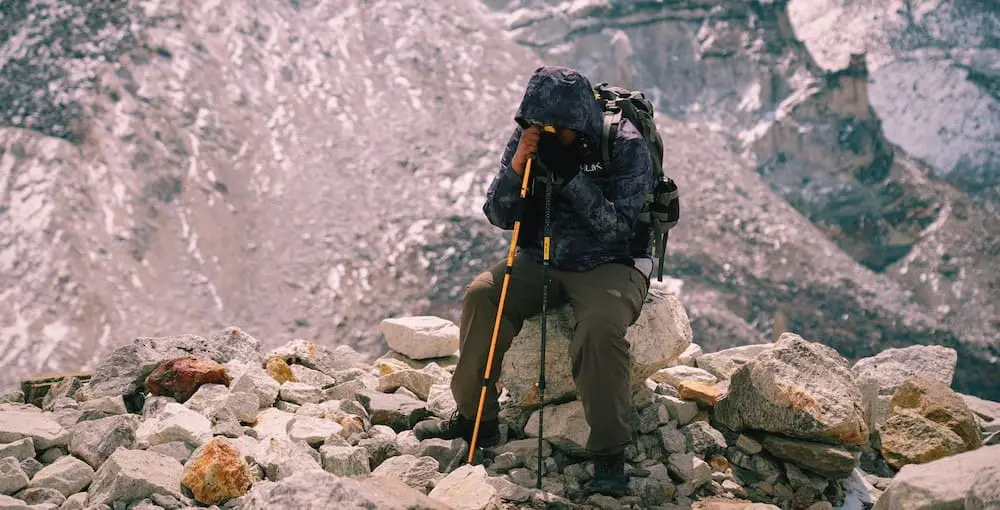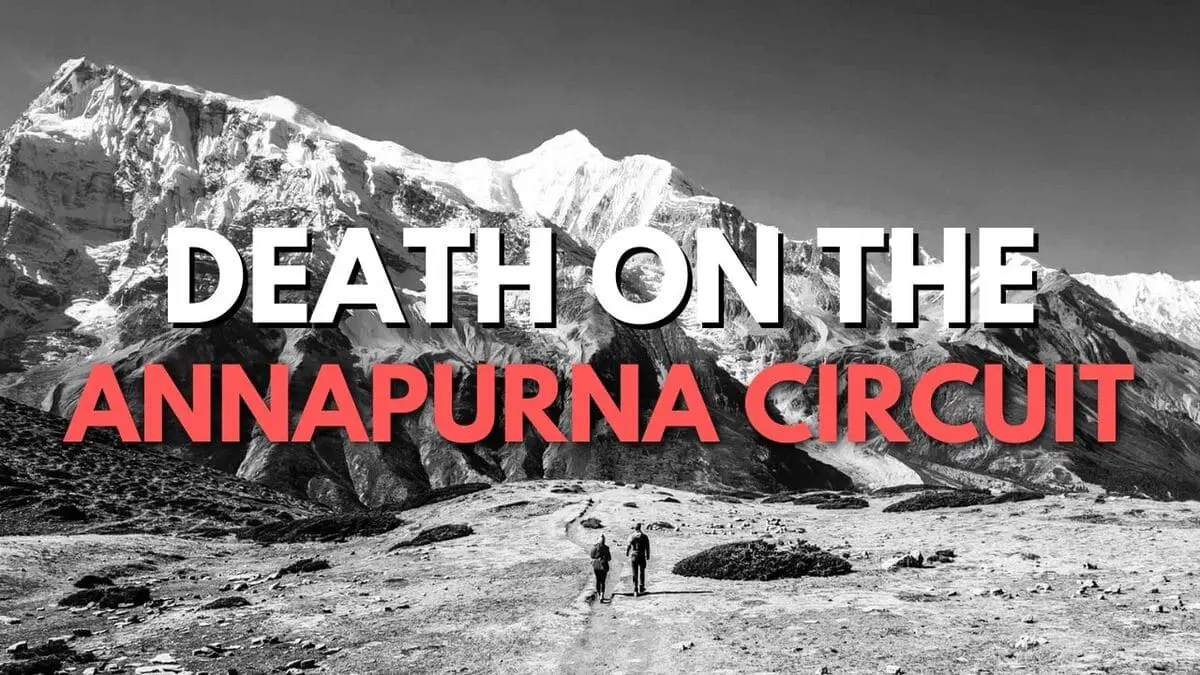On October 14, 2014, a weather change on the Annapurna Circuit resulted in a number of fatalities near Thorong La Pass and one of the biggest rescue missions ever undertaken in the Himalayas. Unfortunately, due to a lack of communication and caution by trekkers, 43 people died on the Annapurna Circuit. Sadly, the event was a remainder that death on the Annapurna Circuit could strike at anytime.
The mountains in Nepal can be a beautiful but unforgiving place. With high altitudes, and drastic weather changes, climbers and trekkers may find themselves battling for their lives. This blog is the account of one of the deadliest incidents that ever occurred along the trekking route known as the Annapurna Circuit.
Annapurna Circuit in Nepal
The Annapurna circuit, as one as the Annapurna Base Camp Trek are among the most popular trekking routes in Nepal, as well as around the world. Moreover, it is regarded as one of the most exquisite and interesting trips in the entire world. You need roughly three weeks to complete the round.
The path takes one from a height of 780 meters to a height of 5416 meters over the Thorong La Pass. This is the highest point overall on the trek.
The pass is often crossed from east to west. As it is simpler to descend than to ascend because of the approximately 1600-meter altitude change from the westside to Muktinath. The walk is very well-liked due to the route’s beauty and lack of overall difficulty to complete. As a result, up to 300 permits are sold each day during the peak season.
Resulting in over 6,000 people walking the Annapurna Circuit all together during a season!
Another reason the trek is so popular is because you may complete the walk without a tent, which is another factor in its popularity. There is no requirement for tents, heavy equipment, or any other substantial accommodations because there are so many places to stay along the route. Many trekkers walk the route alone, without a guide, as it is relatively simple, easy and comfortable to accomplish.
High Altitude Sickness in Thorong La Pass

Even though the trail is regarded as easy, not every hiker reaches the destination in good health. Around Thorong La Pass, a few hikers as well as local Nepalese porters can run into illness, or worse. High altitude sickness can be the silent killer as it can sneak up on you quickly.
Acute altitude sickness is the most typical cause of death at the pass. The main cause of this is inadequate acclimation during the steep climb to over 5,000 meters. High altitude sickness can strike anyone at anytime, resulting in a loss of brain and physical function.
Altitude sickness is the very illness that ended up being critical on October 14, 2014, as well.
Weather begins to turn for the worst on the Annapurna Circuit:
Whereas, there was news that the weather on the mountain was beginning to change, with meteorologists forecasting severe winds and storms a week prior to the catastrophe. The weather had started to change on October 12. Making it completely unsettling, dangerous and entirely different from earlier in the week.
More than 160 trekkers set out to cross Thorong La Pass despite the weather predictions, and words of caution from others. At High Camp on the east side, there was already 20 to 30 cm of new snow in the morning. However, the visibility was not yet alarming. Giving some trekkers hopes of crossing the pass.
East to west was the direction of the wind. Thus, the majority of hikers were propelled toward the pass by a tailwind; making it easier for them to cross the pass.
So they thought.
At first light, the wind picked up speed and people started to become concerned about the situation they found themselves in. The trekkers begin to realize they were stuck between a rock and a hard place. Whereas, turning around on the east side now required reversing and going straight into a head wind. This felt much worse than continuing with a tailwind up to the pass.
The wind began blowing so hard that the tracks of the person in front vanished quickly. At this time, visibility was less than 100 meters, and with every gust, a white out occurred, reducing visibility to nothing.
Lack of visibility, added to the dangers on the Circuit
The horizon was no longer visible after that. However, many trekkers continued to struggle to get over the pass without realizing that it would be considerably worse on the other side.
At the top of the pass, where the wind was the greatest, conditions were the worst. The wind was magnified by the landscape’s “nozzle” effect, which forced the wind inside like a funnel. The wind chill was said to be less than negative 50 degrees Celsius.
At the top of the pass, there is a tiny tea house. However, there was no place to take refuge from the storm, as it was completely full already, due to other trekkers trying to find refuge away from the storm.
The pass marked the peak of their journey along the circuit, meaning the travelers were already tired and worn out. The trekkers were in even more danger as many of them took longer than the typical 3-5 hours to cross, putting them in an even more deadly situation.
Lack of Acclimation + Bad Weather = A Threatening Situation for Climbers

Those who had trouble acclimating here were battling not only the weather, but also the effects of altitude sickness. These symptoms include a significant decline in performance, dizziness, nausea, and a racing heart. All of these conditions, together with heavy snowfall, zero-meter visibility, and subfreezing temperatures, are undesirable during a storm.
However, the climbers had to deal with considerably worse circumstances when they descended on the west side. There, the snow was between 1.5 and 2 meters high, and the fog made visibility next to nothing.
In this instance, snow was driven across the pass from east to west. On the west side of the valley, there are orientation poles.
But it was impossible to see from one pole to the other due to the poor visibility. These were the perils that trekkers, villagers, and guides had to deal with: whiteouts, disorientation, storms, freezing temperatures, and altitude sickness.
Even minor errors or injuries can have negative consequences in this scenario. In addition, many were trekking from hut to hut without tents or other emergency supplies, leaving them with no way to find refuge.
By mid-afternoon, things began to clear up and visibility had increased to about 300m. However, many people still had to travel a rough route. Near the pass, those who did not walk through waist-high snow had to be cautious to avoid slipping on the melting snow and hurting themselves.
With rescue teams unable to reach the area, it became obvious that climbers were going to find themselves in a dire situation. However, even if rescuers had been able to arrive right away without the difficulties of the storm, climbers and locals still would not be able to reach rescue teams. This was because the storm knocked out the power, telephone lines and cell phone connections.
Aftermath of the Annapurna Circuit Deaths
It took a while to determine the full scope of the catastrophe. After three days, 17 people were still missing. In the end, a total of 518 people were saved, including more than 300 trekkers. Regrettably, 43 people passed away.
Out of the 43 that died, three of them were yak herders, while the majority of the rest of people were from Nepal. Tourists from Canada, Poland, Israel, Slovenia, India, and Vietnam were also among the fatalities.
October 14, 2014 proved to be a heartbreaking day along the Annapurna Circuit. That day demonstrates how mother nature can quickly turn a beautiful trip into a treacherous and dangerous event.
FAQs: Annapurna Circuit Deaths
October 14, 2014 proved to be a heartbreaking day for the families of climbers. Unfortunately, there have been many other accidents, and death on the Annapurna Circuit in Nepal. This next section highlights some of the most frequently asked questions about death on the Annapurna Circuit.
The Annapurna I in Nepal is the world’s most lethal mountain. In just 158 tries, a specific ascent of the Himalayan peak Annapurna I has resulted in the deaths of 58 climbers. The rate of fatalities is the highest of any ascent in the world.
There have been about 395 successful summits of Annapurna I as of November 2022. 73 people have died in total while attempting to peak Annapurna I. That is a startling mortality rate of 20%. Therefore, one out of every five climbers who tackle Annapurna I dies.
K2 the second tallest mountain in the world and Annapurna I, are the most dangerous and deadly mountains in the world. The death rates in the two mountains are 29% and 22%, respectively.
Find out about how deadly K2 is in my blog about the 2008 K2 disaster: How 11 climbers died.
A total of 73 people have died while trying to climb Annapurna I in Nepal.
Annapurna I is the deadliest mountain to climb in the world. It has the highest death to ascent rate in the world at 29%.
Annapurna is the most dangerous and deadly mountain to summit. Check out my that covers all 10 mountains: Deadliest Mountains to Climb in the World.
